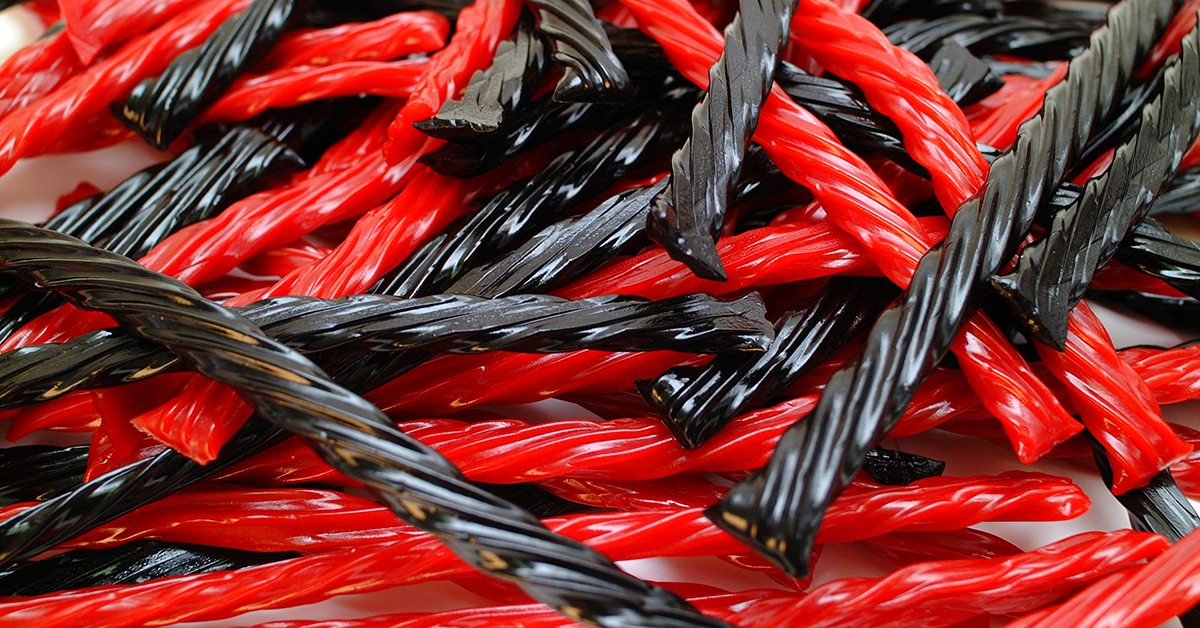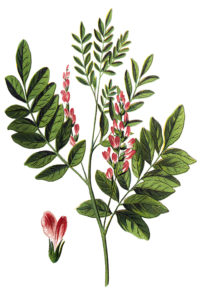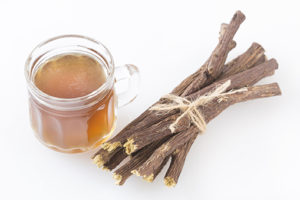
Licorice has been around for thousands of years. It’s said to have been enjoyed by Napoleon, the Egyptian pharaohs and Alexander the Great.
But don’t picture King Tut helping himself to some strawberry laces. This candy has come a long way over the centuries. In this blog post, we’re looking at the history of licorice.

Does licorice come from licorice root?
Licorice gets its name from the licorice plant. Inside the root of this plant you’ll find a sweet-tasting compound known as anethole (also found in fennel and anise, which both have a “licorice-y” flavor).
Originally grown in southern Asia, this plant spread through the Middle East into Europe. The candy form of licorice first came into being in the 16th century.
How is licorice made?
The licorice candy manufacturing process depends on the size of the manufacturer. Smaller companies employ cornstarch molding, pouring hot, liquid licorice into individual molds. When the molds cool, they turned and the candy falls out, prepared for packaging.
Larger manufacturers use extruders to produce different forms of licorice ropes, boiling liquid licorice, with all its colors and flavors until it thickens into a dough until it’s forced through formers that give it its rope-like shape.
Licorice: It’s good for you!

Licorice was initially prized for its healing properties. Chewing licorice root keeps people hydrated, while also alleviating chest congestion, allergies and mild inflammation.
Alexander the Great orders his troops to chew licorice root to stay hydrated and healthy on long marches. Centuries later, it was still common to find licorice on the shelves of apothecaries in the Middle Ages. And this isn’t one of those medieval medical beliefs that we’ve since discarded: modern studies have shown that licorice can help clear the lungs and settle the stomach.
Licorice: From Beverage to Candy
What do licorice and chocolate have in common? Aside from the fact that we sell them both, they each began life as a beverage before becoming more widely known as a confection.
During the Middle Ages, most people enjoyed licorice by brewing it into a beer, both for medicinal and recreational purposes.
When the Renaissance arrived, people began using licorice in sweets and cakes, most famously at the Pontefract monastery in Yorkshire, England. By the 1600s, the candy we now know as licorice began to show up in Holland. Licorice remains one of the Netherlands’ most favorite candy.
Who eats the most licorice?
In fact, licorice candy is so prized in the Netherlands that they’ve become the world’s licorice leader, with the Dutch consuming more licorice per capita than any other country.
However, the licorice people eat in Europe is much different from the licorice we enjoy here: it’s stronger, saltier and often mixed with mint or menthol.
When is licorice not licorice? The difference between red and black licorice

Although it bears the same name, red licorice isn’t actually licorice. It’s gotten that name because it often comes in the same shapes – ropes, pinwheels, shoelaces – as black licorice, although it isn’t made from the licorice plant.
Whether you’re a fan of black laces or red, Skip’s Candies has something to satiate your sweet tooth. Browse our website to find the licorice of your linking, direct from our dedicated nut-free factory.

